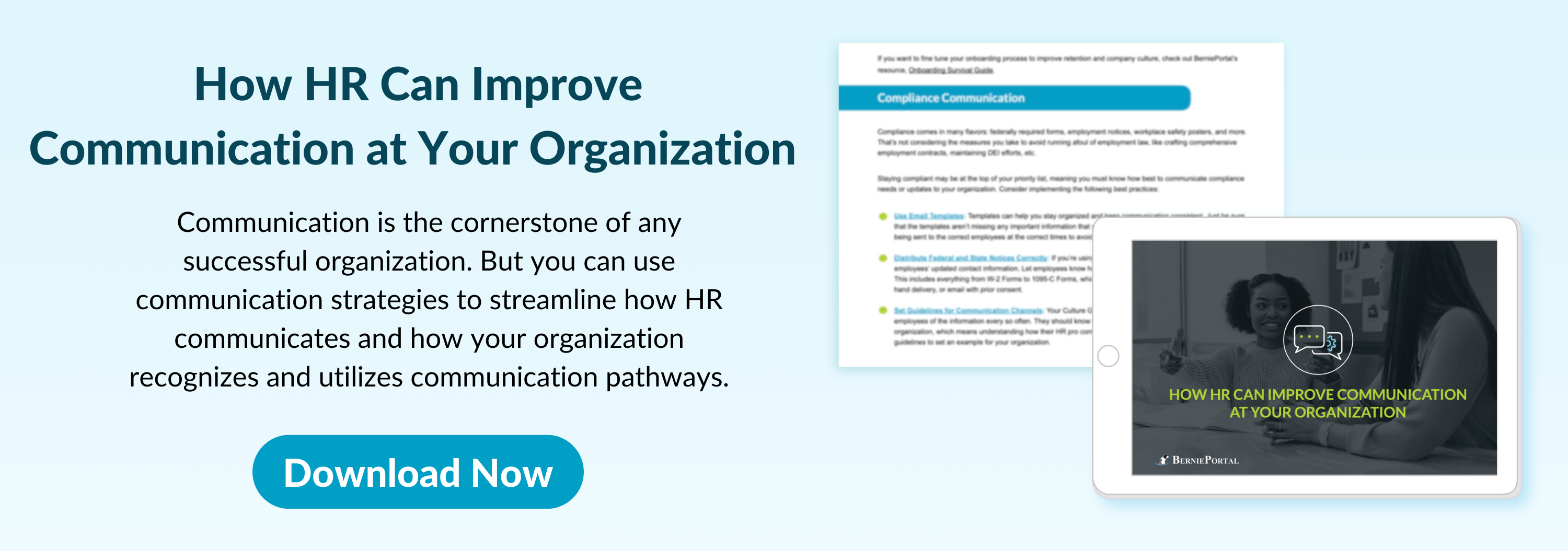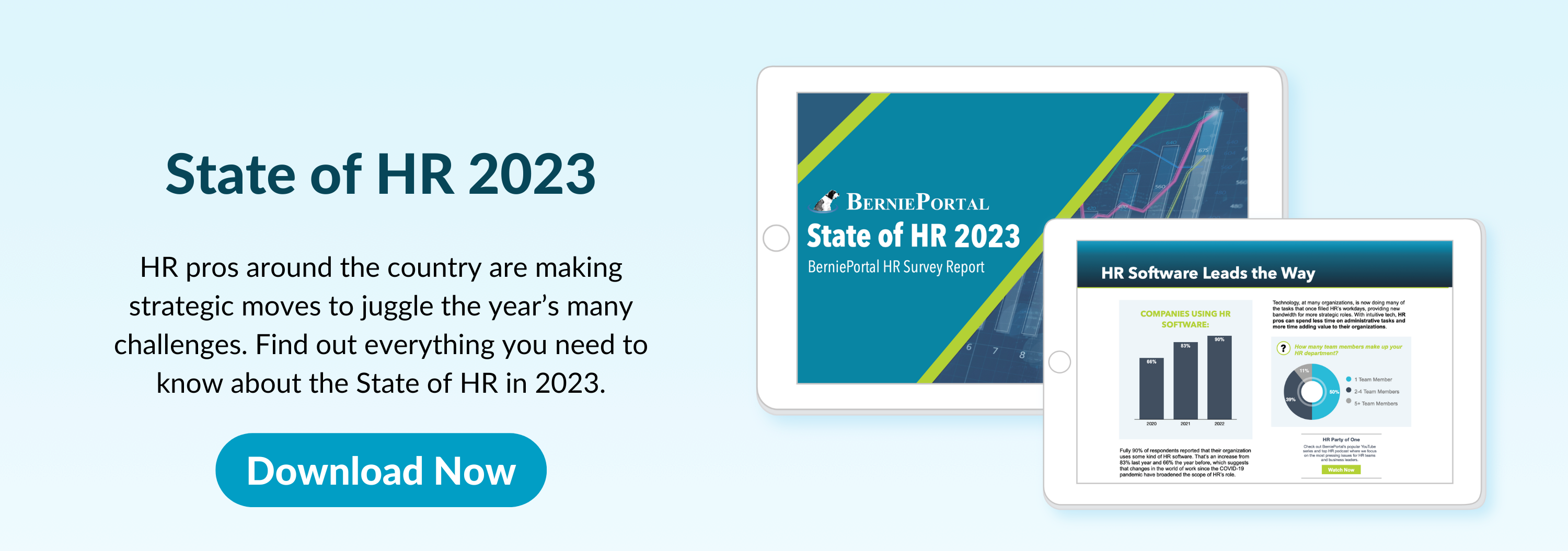Written by
Will Miranne
Will is an aPHR-certified writer on the marketing team at BerniePortal. He writes about healthcare, human resources, and benefits.
Maximizing the Benefits of HSA Triple Tax Advantage: An HR Guide

HSAs are a fantastic way to optimize your spending on medical expenses. They allow you to put aside money to be used on qualified expenses with triple tax advantages. This means you will end up with more money to spend on healthcare than if you were simply putting money aside every month.
Read on to learn more about HSAs and the triple tax advantages that they offer.
Refresher: What Is an HSA?
A Health Savings Account (HSA) is a personal bank account that allows employees to set aside pre-tax dollars for qualified medical expenses. HSAs must be paired with eligible high-deductible health plans (HDHPs).
Both employees and their employers can contribute to an HSA, but the IRS does limit total contributions to any individual account each year. In other words, the more an employee contributes, the less the employer can contribute, and vice versa. The IRS typically increases the HSA contribution limit and HDHP minimum deductible threshold each year.
HSAs are portable, which means an employee can take their funds with them when they leave employment. Also, HSAs roll over from year to year, making them an excellent investment for younger, healthier employees who may not need to pay as much for healthcare now as later.
Speaking of investments, employees can invest their HSA funds in interest-bearing accounts for qualified medical expenses in the future. Individuals should keep in mind, however, that most banks that manage HSAs require a minimum investment, usually $1000.
The tax-free advantage of HSAs is another reason why they are such a popular benefit. It essentially means that employees can save about 30% on qualified medical expenses, such as copays, prescription medications, physical therapy, and certain healthcare products. For a complete list of qualified medical expenses, check out the IRS’s Publication 502.
Understanding the Triple Tax Advantage
HSAs are unique in that they provide three different tax benefits. If you have ever heard the term “triple tax advantage” when discussing HSAs, it is referring to these benefits. Here is a breakdown of each of the three tax advantages:
1. Tax-free contributions:
Tax-free contributions mean that the money you place into your HSA is not taxed. Another way of saying this is all money contributed to an HSA is “pretax” money.
As an example, let's say you set aside $4,000 each year to pay for any medical expenses. After paying 22% federal taxes on that amount, you now have only $3,120 to use for those medical expenses.
If you were to invest that same amount into an HSA, the amount you would have to spend on medical expenses would be exactly $4,000. This is the first major benefit of an HSA.
2. Tax-free earnings:
This benefit is exactly how it sounds. Any growth or earnings on an HSA account accrue tax-free. This means that you can grow your account and further increase your spending amount on medical expenses.
3. Tax-free withdrawals:
With traditional tax-advantaged accounts like IRAs or 401(k)s, you will pay taxes whenever the money is withdrawn, save for a Roth account, in which case you will pay taxes on the money ahead of time. With an HSA, you will not pay any taxes when withdrawing funds to pay for qualified medical expenses.
Implementing HSAs in the Workplace
If you decide to offer an HSA health plan, then be sure you advertise the benefits to your employees. One of the biggest missed opportunities for employees is not contributing to their HSAs.
Employees are permitted to make contributions either through automatic deposits from regular payroll deductions or through manual deposits. With the latter method in mind, full tax benefits won’t be realized until the person has filed their taxes.
Of course, a company shouldn’t recommend a specific contribution amount for their employees. Put simply, your team’s health needs aren’t all the same. One person may not require a single healthcare service for the entire year, while another may need surgery, regular prescription refills, and other necessary coverage.
HR professionals should consider the plan design as well as communications strategies. Be sure the plan is intuitive and that all employees understand the functionality so as to maximize their benefits.
Here are some best practices for maximizing the benefits of an HSA program for both employers and employees:
For Employers:
- Educate Employees: Employers should educate employees about the benefits of an HSA program. This includes how to use the account, tax benefits, and investment options.
- Offer Contributions: Employers can contribute to their employees HSA accounts. This can be done through a matching program or by providing a set contribution amount.
- Communicate Regularly: Employers should communicate regularly with employees about their HSA accounts. This can be done through newsletters, emails, or other communication channels.
- Offer a Range of Investment Options: Employers should offer a range of investment options for employees to choose from. This can help employees maximize the growth potential of their HSA funds.
- Choose a Reliable HSA Provider: Employers should choose a reliable HSA provider that offers easy-to-use tools and resources for managing the program.
For Employees:
- Take Advantage of Tax Benefits: Employees should contribute to their HSA account to take advantage of the tax benefits. Contributions are tax-deductible, and withdrawals for qualified medical expenses are tax-free.
- Use HSA Funds for Medical Expenses: Employees should use their HSA funds for qualified medical expenses to maximize the benefits of the program.
- Save for Future Medical Expenses: Employees should consider using their HSA account as a savings vehicle for future medical expenses.
- Invest HSA Funds: Employees should consider investing their HSA funds to maximize growth potential. This can be done through a range of investment options offered by the HSA provider.
- Keep Track of HSA Account: Employees should keep track of their HSA account and make sure they are using the program to its full potential. This includes monitoring contributions, expenses, and investment options.
What Are HSA Contribution Limits?
The new contribution limits are dependent upon whether an individual is enrolled in self-only or family coverage under an HDHP. The 2023 HSA contributions have increased to $3,850 for single coverage and $7,750 for family coverage.
The HDHP Minimum Deductible does not apply to preventative care services nor to services related to COVID-19 testing. It has not increased since 2022, so single coverage rises to $1,500, and family coverage rises to $3,000.
The 2023 HDHP Maximum Out-of-Pocket Limit is $7,500 for single coverage and $15,000 for family coverage.
For those 55 and older, catch-up contributions remain at $1,000.
Additional Resources
You can also stay informed, educated, and up-to-date with HSAs and other important topics by using BerniePortal’s comprehensive resources:
-
BernieU—free online HR courses, approved for SHRM and HRCI recertification credit
-
BerniePortal Blog—a one-stop-shop for HR industry news
-
HR Glossary—featuring the most common HR terms, acronyms, and compliance
-
HR Guides—essential pillars covering an extensive list of comprehensive HR topics
-
HR Party of One—our popular YouTube series and podcast, covering emerging HR trends and enduring HR topics
Written by
Will Miranne
Will is an aPHR-certified writer on the marketing team at BerniePortal. He writes about healthcare, human resources, and benefits.
Related Posts
Younger generations are becoming more aware of the benefits of long-term savings....
If you haven’t heard about Ozempic or Zepbound yet, it’s bound to hit your radar soon!
What Is “Market Value”? Simply put, market value is how much the market at large values...









Submit a Comment